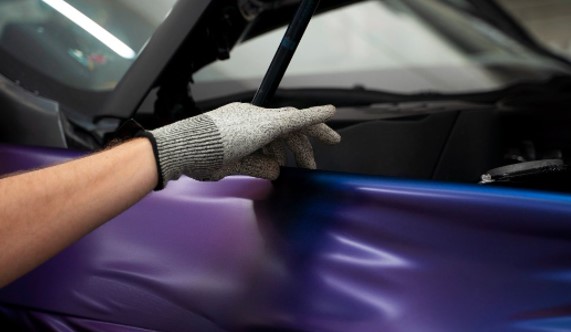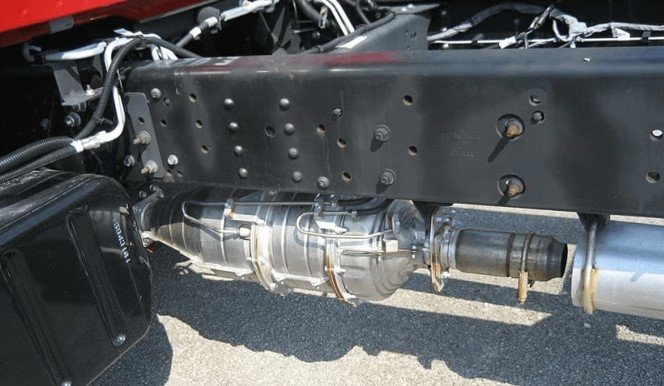A hidden challenge for Minneapolis climate goals: shoddy insulation
About two-thirds of homes being listed for sale in Minneapolis have inadequate insulation, according to a review of energy disclosure reports.
Since January 2020, Minneapolis has required homeowners to disclose the results of a recent energy audit before selling a property. Since then, the city has collected publicly accessible data on more than 16,000 residential properties.
Gas utility CenterPoint Energy and the Center for Energy and Environment, a nonprofit that manages the city’s residential benchmarking program, recently studied the data and identified a lack of insulation as a recommendation to address in 65{12dec99aef6f119e349308ab81c83b123ba77cd3d9c980ff09eaac1f958a2724} of the reports. About 40{12dec99aef6f119e349308ab81c83b123ba77cd3d9c980ff09eaac1f958a2724} flagged inefficient heating appliances.
The results didn’t come as a surprise to the researchers, but the figure highlights a hidden barrier to the city’s climate goals and the financial burden on residents who are paying for heat that’s leaking through walls and attics.
“Insulation is invisible,” said Arbor Otalora-Fadner, program coordinator with the Center for Energy and Environment. “It’s not something people see, making it hard to get people’s attention and take steps forward to getting that improvement done.”
Energy audit recommendations
The Center for Energy and Environment has audited 16,000 homes as part of the City of Minneapolis’ residential benchmarking program, which since 2020 has required homes to undergo an energy audit before they are sold. Here are the most common deficiencies or recommendations identified so far.
| Issue | Percent of homes |
|---|---|
| Insufficient insulation in the walls or attic | 65{12dec99aef6f119e349308ab81c83b123ba77cd3d9c980ff09eaac1f958a2724} |
| Inefficient or old heating source | 40{12dec99aef6f119e349308ab81c83b123ba77cd3d9c980ff09eaac1f958a2724} |
| Single-pane windows without storms | 6{12dec99aef6f119e349308ab81c83b123ba77cd3d9c980ff09eaac1f958a2724} |
An unseen expense
Otalora-Fadner said the center’s evaluators measure insulation in two ways. They access a discrete wall cavity in an original part of a home to measure insulation depth and type of wall insulation. In attics, they often test in multiple areas, especially in one-and-a-half-story homes.
Energy reporting software is used to determine if wall insulation has at least an R-11 value and the attic insulation R-50, he said. R values measure resistance to heat — the higher the number, the more effective the insulation. Attics have higher R-values because they have more room than walls for insulation.
Dave Lamb, general manager of Lewis Insulation, said many homes from the early 1900s have no insulation at all or have tar paper, “which was cutting edge at the time.”
While older homes remain the most likely prospects for new insulation, newer homes do not always have a commendable track record. Lamb said leakage even exists in more contemporary homes built from the 1970s to 1990s because of poor attic air sealing.
Even though CenterPoint Energy offers rebates for insulation and the center’s staff promote it heavily to homeowners, insulation remains a hard sell, a thing people should do — like auto maintenance, flossing, and vacation budget planning — but often neglect.
“Insulation doesn’t really speak for itself in a way that a lot of other home improvements can,” Otalora-Fadner said.
Cost often becomes a factor, especially when dealing with century-old homes. Retrofitting even smaller one-and-a-half-story homes of that era costs between $4,000 and $7,000, Lamb said. Contractors adding insulation to newer homes usually face fewer structural obstacles than in older residences.
Homes in the 1920s and 1930s often have knob-and-tube wiring that often requires rewiring the house before adding insulation because of fire hazards. As a result, costs can increase anywhere from $5,000 to $20,000.
Insulation is “a money issue and that’s why it doesn’t get done,” Lamb said.
Other problems that can raise the cost include the presence of asbestos or vermiculite in existing insulation, which must then be removed.
Contactors generally inject cellulose insulation composed of ground-up newspaper and a fire retardant from the home’s exterior, but occasionally they must cut small holes in interior walls.
Step one for electrification
In addition to being a standalone strategy for reducing the city’s carbon emissions, good insulation is also an important prerequisite for electrification. Heat pumps have significantly improved in recent years, but they can still struggle to keep up in subzero temperatures.
That’s why the Center for Energy and Environment recommends weatherization first before switching to electric heating, according to the center’s senior director for residential and community energy, Rebecca Olson.
“My mission this year is to make sure that people understand that insulation and air sealing are the number one electrification measure, especially in our climate,” Olson said. “Heat pumps can only do so much in our climate. Getting those heating loads down as low as possible so that your heat pumps can do the heating for most of that winter season is where [insulation] matters.”
The Center for Energy and Environment has seen mixed results in convincing homeowners to insulate. One-third of the homeowners in 2021 who received energy disclosure reports sought an insulation rebate for a project, which Otalora-Fadner found encouraging.
That’s still not close to the amount of rebates for home heating systems, many of which are initiated after an appliance stops working.
Nor do many homeowners seek financial assistance for insulation projects. Jim Hasnik, director of lending services for the center, said insulation represents about 3{12dec99aef6f119e349308ab81c83b123ba77cd3d9c980ff09eaac1f958a2724} of the money it lends through its home loan programs, a figure that has not changed appreciably over the years.
CenterPoint Energy provides insulation rebates for city residents of $300 to $500, depending on the project size. In 2021 the utility gave rebates to 400 residences, a decline from the prior two years.
The Inflation Reduction Act will boost incentives for insulation this year, including tax credits for eligible expenses up to $1,200 per year. The Center for Energy and Environment has begun preparing its energy advisor staff to help clients take advantage of those new incentives.
“We certainly hope the increased energy efficiency tax credits and other IRA incentives will help more people access energy upgrades for their home,” Otalora-Fadner said.
For Lamb, business has been good, which he attributes to rising energy costs. “What we’ve seen in the last couple of years is that the cost of a therm of gas has motivated many people,” he said. “I can’t complain about it.”
This article first appeared on Energy News Network and is republished here under a Creative Commons license.![]()





